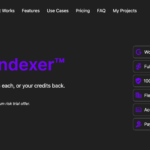
In the world of digital marketing, SEO reports play a crucial role in assessing the performance of a website and determining the effectiveness of SEO strategies. White-label SEO reports, in particular, are customized reports that can be branded with your own logo and design, making them a powerful tool for agencies and professionals looking to showcase their work to clients. In this article, we will explore the process of creating white-label SEO reports and how to automate them for efficiency.
The Importance of White-Label SEO Reports
White-label SEO reports provide a professional and branded representation of the work done by SEO agencies or professionals. They offer a comprehensive overview of the website’s performance, including keyword rankings, organic traffic, backlinks, and more. These reports not only help clients understand the progress made but also build trust and credibility in the services provided.
Creating White-Label SEO Reports
Creating white-label SEO reports involves a few key steps:
1. Choose the Right Reporting Tool
There are several reporting tools available that can help you create white-label SEO reports. Some popular options include SEMrush, Moz, Ahrefs, and Google Data Studio. Evaluate the features, customization options, and integrations offered by each tool to find the one that best suits your needs.
2. Customize the Report Template
Once you have selected a reporting tool, you can start customizing the report template. Add your logo, brand colors, and any other design elements that align with your brand identity. This customization will give the report a professional and personalized look.
3. Include Relevant Metrics and Data
When creating white-label SEO reports, it’s important to include relevant metrics and data that demonstrate the effectiveness of your SEO efforts. Some key metrics to consider include:
- Keyword rankings: Show the progress of targeted keywords over time.
- Organic traffic: Highlight the increase in organic traffic to the website.
- Backlinks: Showcase the number and quality of backlinks acquired.
- On-page optimization: Provide insights on the optimization efforts made on the website.
4. Add Visuals and Images
Incorporating visuals and images can make your white-label SEO reports more engaging and easier to understand. Use graphs, charts, and screenshots to visualize data and trends. For example, you can include a graph showing the increase in organic traffic over time or a chart displaying the distribution of keyword rankings.
5. Provide Insights and Recommendations
White-label SEO reports should not only present data but also provide valuable insights and recommendations. Explain the significance of the data presented and offer suggestions for further improvement. This will demonstrate your expertise and help clients understand the next steps to take.
Automating White-Label SEO Reports
Automating white-label SEO reports can save you time and effort, allowing you to focus on other important tasks. Here are some steps to automate the process:
1. Set up Scheduled Reports
Most reporting tools offer the option to schedule reports to be sent automatically at specific intervals. Set up a schedule that works for you and your clients, whether it’s weekly, monthly, or quarterly. This way, the reports will be generated and delivered without manual intervention.
2. Use Data Connectors and APIs
Integrate your reporting tool with other platforms and data sources using data connectors and APIs. This will allow you to pull data directly from sources like Google Analytics, Google Search Console, or social media platforms. By automating data retrieval, you ensure that your white-label SEO reports are always up to date.
3. Customize Email Templates
When automating the delivery of white-label SEO reports, customize the email templates to include a personalized message for each client. This will add a personal touch and show that the report was specifically prepared for them.
Conclusion
White-label SEO reports are an essential tool for SEO agencies and professionals to showcase their work and demonstrate the value they provide to clients. By following the steps outlined in this article, you can create professional and customized reports that highlight the success of your SEO efforts. Automating the process further enhances efficiency, allowing you to focus on delivering exceptional results for your clients.




